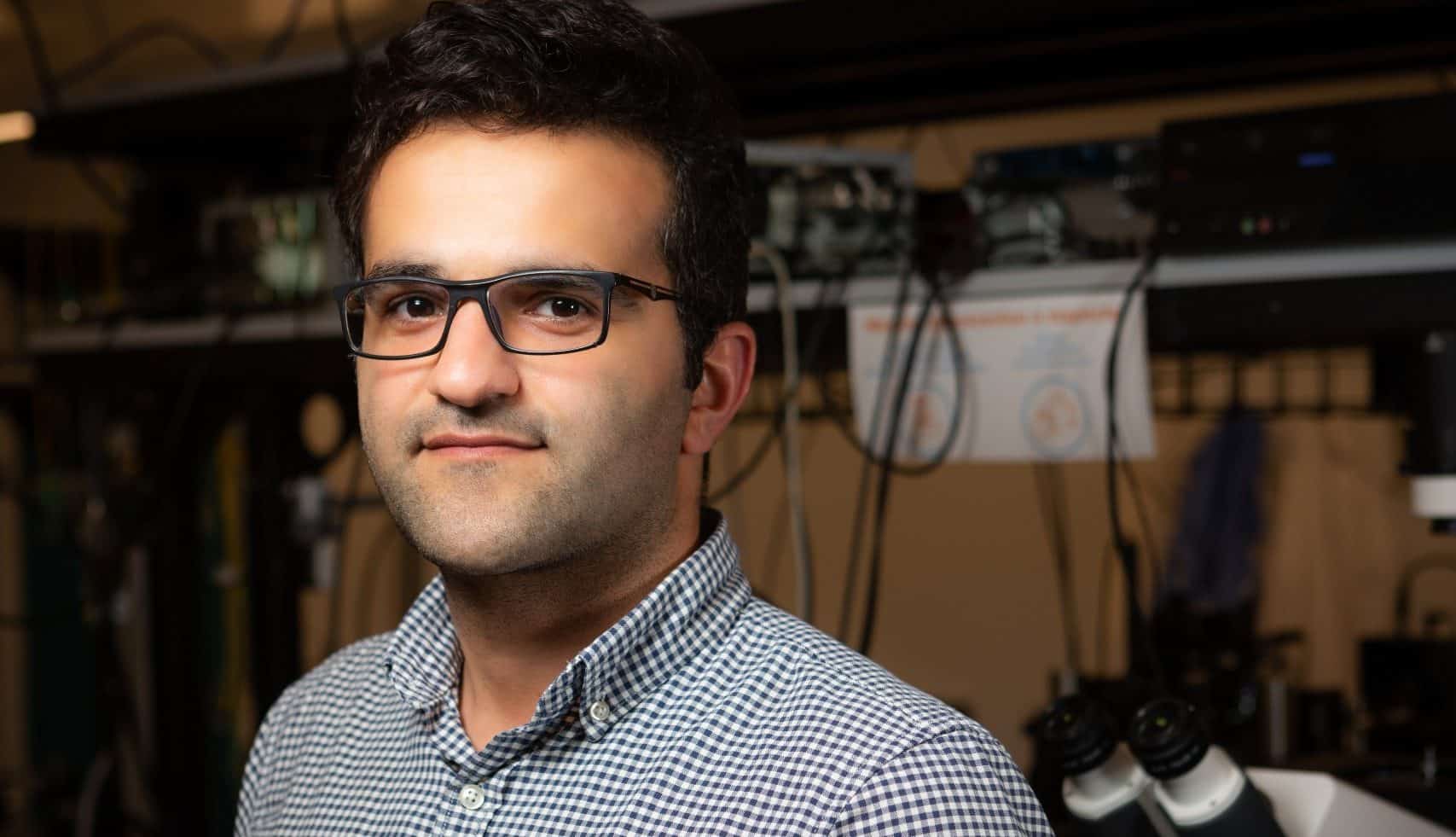A group of researchers including a Concordia PhD student have developed a new method of bioprinting neuron cells. They’re using a new laser-assisted technology that maintains high levels of cell viability and functionality. Concordia PhD candidate Hamid Orimi says the new technology can spur drug development and future advances in the field
PhD candidate and 2020-21 Public Scholar Hamid Orimi and his co-authors present the feasibility of a new bioprinting technology they developed in a recent paper published in the journal Micromachines. They demonstrate how the methodology they created, called Laser-Induced Side Transfer (LIST), improves on existing bioprinting techniques by using bioinks of differing viscosities, allowing for better 3D printing. Orimi, his Concordia co-supervisor Sivakumar Narayanswamy in the Gina Cody School of Engineering and Computer Science, CRHMR co-supervisor Christos Boutopoulos and co-authors at the Université de Montréal first presented the method in the Nature journal Scientific Reports in 2020.
Orimi co-wrote the newer paper with lead author Katiane Roversi, Sebastien Talbot and Boutopoulos at UdeM and Marcelo Falchetti and Edroaldo da Rocha at Federal University of Santa Catarina in Brazil. In it, the researchers demonstrate that the technology can be used to successfully print sensory neurons, a vital component of the peripheral nervous system. This, they say, is promising for the long-term development of bioprinting’s potential, including disease modelling, drug testing and implant fabrication.
Viable and functional
The researchers used dorsal root ganglion (DRG) neurons from the peripheral nervous system of mice to test their technology. The neurons were suspended in a bioink solution and loaded into a square capillary above a biocompatible substrate. Low-energy nanosecond laser pulses were focused on the middle of the capillary, generating microbubbles that expanded and ejected a cell-laden microjet onto the substrate below it. The samples were briefly incubated, then washed and re-incubated for 48 hours.
The team then ran several tests to measure the printed cells’ capacities. A viability assay found that 86 per cent of the cells remained alive two days after printing. The researchers note that viability rates improved when the laser used lower energy. The thermomechanics associated with higher laser energy use was more likely to damage the cells.
Other tests measured neurite outgrowth (in which developing neurons produce new projections as they grow in response to guidance cues), neuropeptide release, calcium imaging and RNA sequencing. Overall, the results were generally encouraging, suggesting that the technique could be an important contribution to the field of bioprinting.
Good for people and animals
“In general, people often leap to conclusions when we talk about bioprinting,” Orimi says. “They think that we can now print things like human organs for transplants. While this is a long-term objective, we are very far from that point. But there are still many ways to use this technology.”
Nearest at hand is drug discovery. The team hopes to get approval to continue their research into cell grafting, which can assist greatly in drug discovery, such as for nerve recovery medicines.
Another advantage to using this technology, Orimi says, is a decrease in animal testing. This not only has a humanitarian aspect — fewer animals will be euthanized to carry out experiments meant to benefit humans — but it will also produce more accurate results, since testing will be carried out on human, not animal, tissue.
The research for this paper was funded by the Natural Sciences and Engineering Research Council of Canada (NSERC), the Canada Foundation for Innovation and the Canada Research Chairs program.
Read the cited paper: “Bioprinting of Adult Dorsal Root Ganglion (DRG) Neurons Using Laser-Induced Side Transfer (LIST).”


